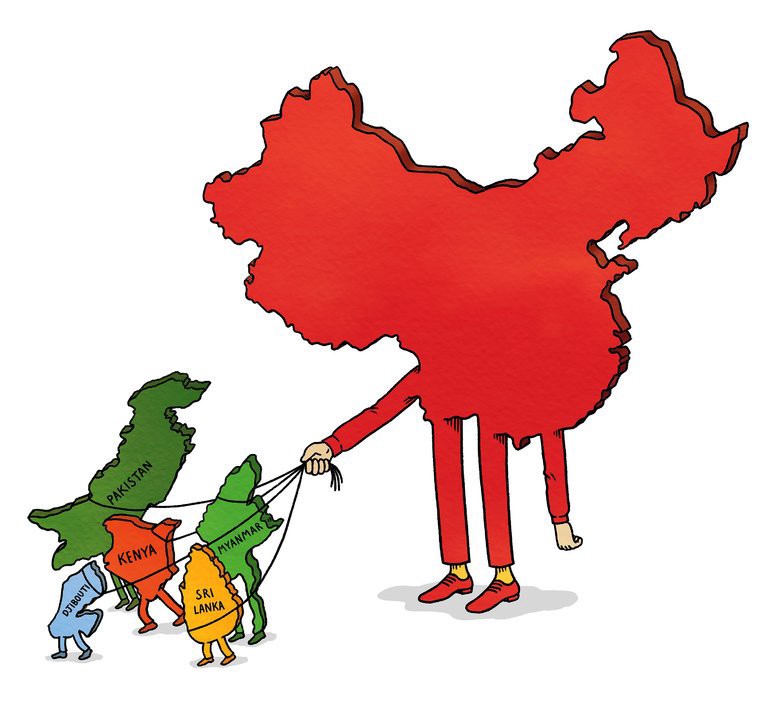
China’s debt-trap policy is engulfing significant economies of the World. China is a brand new ruthless power that has the only expansion of the area in mind.
Recently, Aid Data published a Washington-based Center for Global Development report, Germany’s Kiel Institute, and the Peterson Institute for International Economics.
As examined, 100 Chinese loan contracts with 24 low- and middle-income countries, shedding new light on its priorities when it comes to its role as a Development partner.
Though China’s ‘debt trap’ development cooperation diplomacy has been debated for some time, this is the first empirical study conducted when China’s economic profile increased in Africa, Latin America, Eastern Europe, and Asia. And the World is experiencing a growing global debt crisis.
What is ‘debt trap’ diplomacy?
According to Wikipedia, Debt-trap diplomacy is a theory to describe a robust lending country or institution seeking to saddle a borrowing nation with enormous debt to increase its leverage over it.
India introduced the term ‘debt-trap diplomacy.’ academic Brahma Chellaney in early 2017 has used it in recent years to allege China’s lending policies.
This report has mentioned ‘How China is using its humongous money to lend money to developing countries.
More specifically; the dataset captures ODA (Official development assistance) and OOF (Out of Office) from China to 140 countries and territories in five regions of the World: Africa, the Middle East, Asia, and the Pacific, Latin America and the Caribbean, and Central and Eastern Europe.
6 It includes 4,304 Chinese development projects (worth approximately US$351 billion) that were officially committed, to implementation, or com President Xi Jinping‘s ambitious global infrastructure investment strategy, the Belt and Road.
Initiative (BRI) is the primary source for much of its lending, with China emerging as the World’s biggest creditor, accounting for 65% of official bilateral dubplate between 2000 And 2014.
Chinese policy is very different from the rest of the World. In this 21st century, countries are Keen to invest in soft development like education, health, and governance.
African countries received a significant proportion (59 percent) of the total number of projects financed by China between 2000 and 2014. Seven of the top ten recipient countries are African countries.
The latest example is our neighbor ‘Sri-Lanka’. Sri Lanka’s Hambantota Port case is a Lesson to all countries that remain wary of getting caught in China’s debt trap.
After the Sri Lankan government could no longer keep up with payments for the port, which was extensively supported by Chinese investment, they had no choice but to give it over to Beijing for 99 years.
Small countries like Djibouti, Kenya, and Laos took loans from the Asian Development Bank instead Of the World Bank. World Bank has proper guidelines and well-maintained cash flow.
Management record. But in the Chinese case, there is no pre-determined framework for lending money as a loan, and deals done by China are not official, and no records are public yet.
So There is a vast chance of corruption. Finally, due to the mismanagement of loans, countries often Fall into the debt trap.
World Bank modeling suggests that the debt burdens associated with Belt and Road will Outweigh the growth effects for certain developing countries. What can India do to protect itself and its neighbors from failing in China’s hands?
India is not a part of the BRI project. But still, India’s economic ties with China are not hidden. China is India’s biggest trade partner in the first half of 2020-21, leaving the US, which held that position since 2018-19.
In the previous calendar year, too, China replaced the US as India’s biggest trading partner. But India is aware of China’s expansionist policy, so India focuses more on manufacturing than importing. The coming years will be crucial for India.












